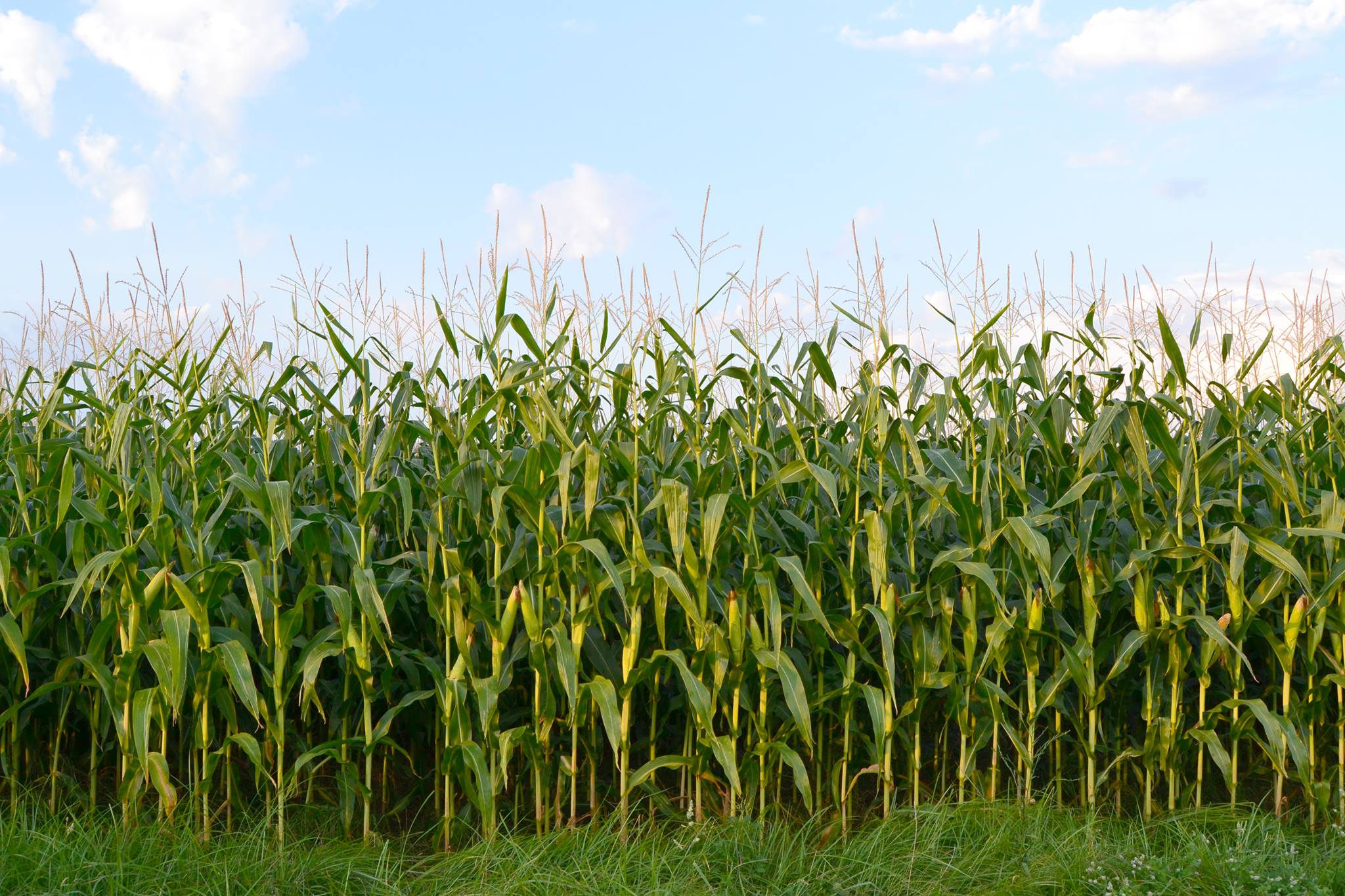Corn is not making your days more humid
Corn is not making your days more humid

When it gets very hot and very humid, people see the fields of tall, green corn and point the finger at these fields. Corn is not making your days more humid unless you are walking in corn fields all day.
The very short answer is that corn will transpire around 4,000 to a peak of 8,000 gallons of water per acre per day. But, in these current conditions, there are about 160,000 gallons of water in the air already. So, any water coming from a field of corn is negligible to the total amount of water in the air.
Corn, like all plants, transpires water and oxygen to help maintain plant functions. Once the corn plant leaves cover the rows and intercept most of the sunlight, most water loss from the cornfield comes from transpiration. Water loss from transpiration is influenced by water availability in the soil, water amount in the plant, relative humidity (which is water in the air), air temperature, cloud cover and windspeed.
If the relative humidity (RH) is high, then transpiration (water loss) from the plants is low. Some estimates in Nebraska indicate that peak water loss from a cornfield is approximately 0.33 inches per acre per day. That equals 8,960 gallons of water per acre per day for about 20 days. Other estimates east of the Missouri River suggest corn will transpire about 4,000 gallons per acre per day. If RH is 50%, and corn plants are at maximum water demand, corn in the region likely loses closer to 5,000 gallons per day.
While that is a large amount of water for any household to use in a day, it is a very small percentage compared to what is already in the air.
We can determine the water in the air by calculating the weight of dry air above one acre, using a psychrometric calculator, and using 86°F and 50% RH at our elevation. With these parameters in the Bluegrass Region of Kentucky, there is about 0.0136 pounds of water (H2O) per pound of dry air. That comes to about 160,000 gallons of water above one acre, whether that acre is corn, a football field, or houses in town. See the resources at the end of this publication to double-check this math and work out scenarios where you live.
To add more perspective to the volumes of water being discussed, 1 inch of rainfall is equivalent to 27,184 gallons per acre. The Kentucky Mesonet at Spindletop Farm in Lexington has recorded 3.1 inches of rainfall for July, equivalent to 84,270 gallons of water per acre that has fallen on the soil. If the atmosphere is holding 160,000 gallons of water at 50% RH and 86°F, and all that water decided to fall to earth in a day, that is equivalent to about 5.9 inches of rainfall per acre.
An acre of corn could remove 35,000 pounds of carbon dioxide (CO2) per acre and release about 25,000 pounds of oxygen (O2) per acre over the growing season.
If someone walks into a cornfield, that corn will block airflow. As that corn transpires, a person will perspire. Inside that cornfield, it will feel more humid. But, outside the cornfield in this region of the country, it is unlikely that corn or other crops will transpire enough water to dramatically affect the humidity in the neighborhoods, towns, and cities.
Resources
Calculators
Psychrometric calculator: https://daytonashrae.org/psychrometrics/psychrometrics.shtml
Weight of air: https://www.engineeringtoolbox.com/air-density-specific-weight-d_600.html
Publications
Kranz, Irmak, Donk, Yonts and Martin. 2008. Irrigation Management for Corn. G1850. University of Nebraska-Lincoln. https://extensionpubs.unl.edu/publication/g1850/2008/pdf/view/g1850-2008.pdf
Thelen, K. 2021. Understanding the role of carbon in agriculture – Part 3. Michigan State University. https://www.canr.msu.edu/news/understanding-the-role-of-carbon-in-agriculture-part-3
Wilson, A.B., A. Lindsey, and O. Ortez. 2024. Corn sweat and humidity: A few facts explained. Ohio State University Extension. https://extension.osu.edu/sites/ext/files/imce/About_docs/Corn%20Sweat%20and%20Humidity%20articke-30Aug24.pdf

